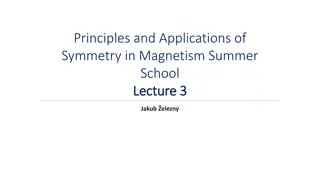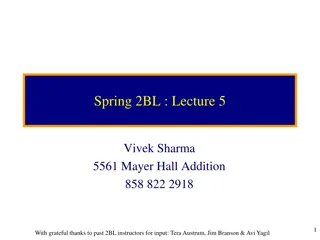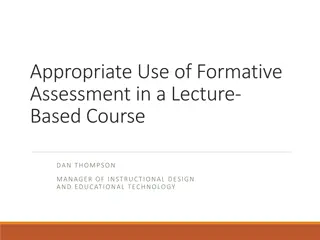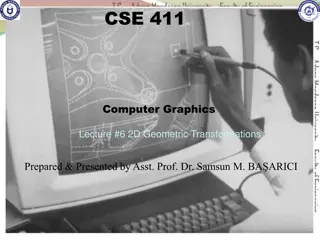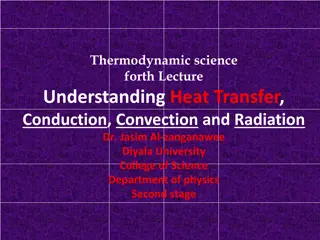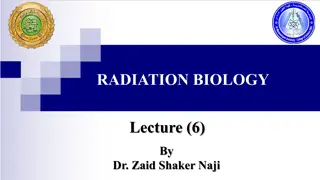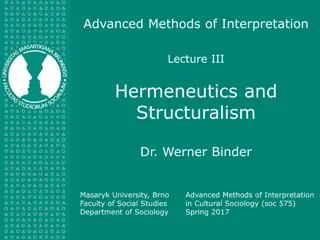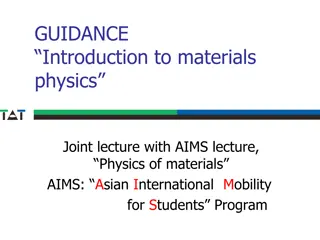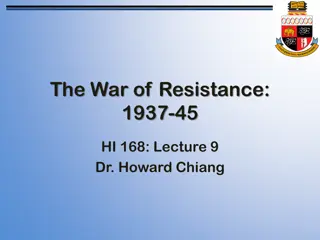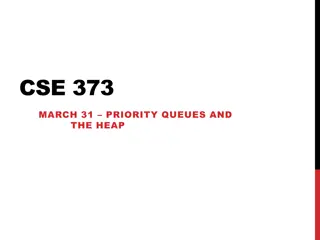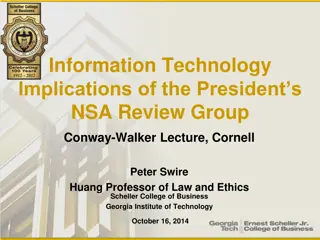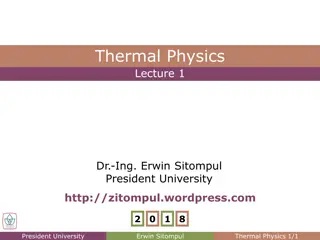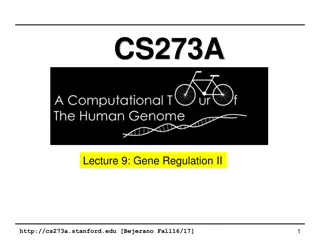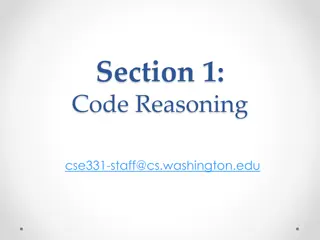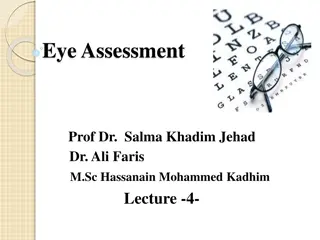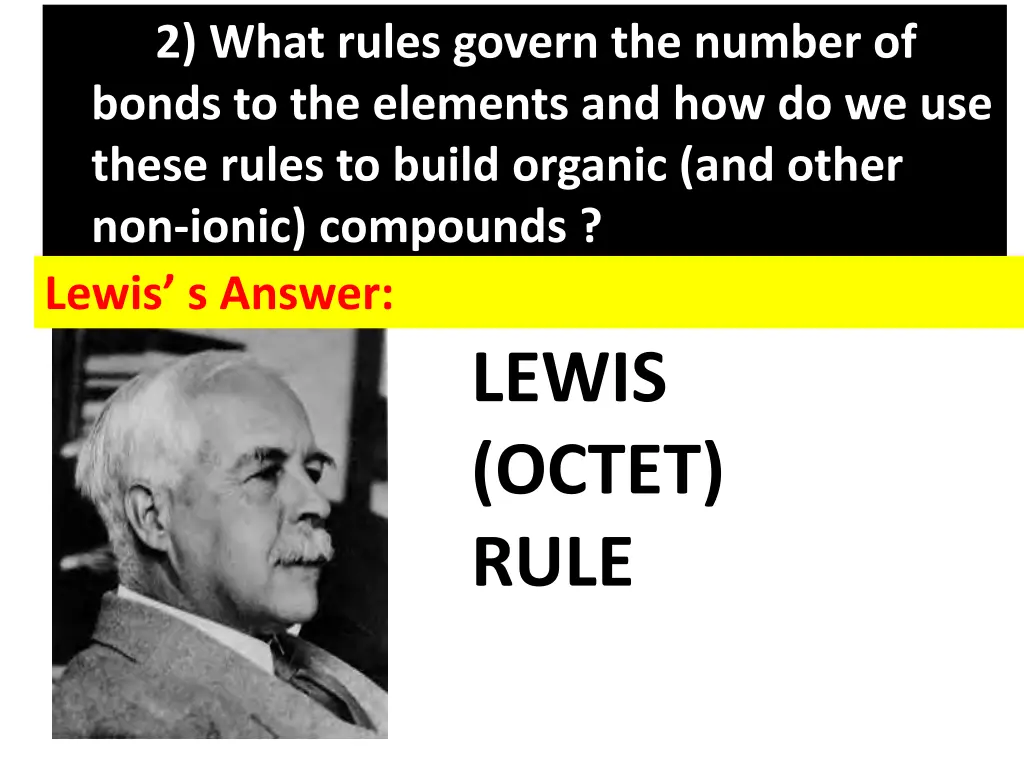
Understanding Lewis Octet Rule and Building Organic Compounds
Explore the rules that govern the number of bonds to elements, particularly the Lewis Octet Rule, and learn how to use these principles to construct organic and non-ionic compounds effectively. Delve into concepts like minimizing formal charges, electron dot games, and the stability of molecular structures.
Download Presentation

Please find below an Image/Link to download the presentation.
The content on the website is provided AS IS for your information and personal use only. It may not be sold, licensed, or shared on other websites without obtaining consent from the author. If you encounter any issues during the download, it is possible that the publisher has removed the file from their server.
You are allowed to download the files provided on this website for personal or commercial use, subject to the condition that they are used lawfully. All files are the property of their respective owners.
The content on the website is provided AS IS for your information and personal use only. It may not be sold, licensed, or shared on other websites without obtaining consent from the author.
E N D
Presentation Transcript
2) What rules govern the number of bonds to the elements and how do we use these rules to build organic (and other non-ionic) compounds ? Lewis s Answer: 2. LEWIS (OCTET) RULE
EXERCISE 2. PLAYING THE LEWIS ELECTRON DOT GAME (2.3) Mole $$ !!!!
Picking the `best Lewis structure when two different ones satisfy the Octet Rule: Lewis `s Minimize Formal Charge Rule (not in text) Cl+ Cl Cl Cl C C vs. O- O Mickey Minnie
Counting electron ownership before vs. after forming molecules #2 #1 In each bond, atoms own half the bond => 1 electron Mickey valence electrons in valence electrons net diff owned as isolated atom owned in molecule 6 4 7 7 Element ?? 0 0 0 0 O 6 4 7 7 C Cl (#1) Cl (#2)
Counting electron ownership before vs. after forming molecules Has +1 formal charge Cl+ Cl #2 #1 C In each bond, atoms own half the bond => 1 electron Has -1 formal charge O- valence electrons in valence electrons net diff owned as isolated atom owned in molecule 6 4 7 7 Element ?? -1 0 +1 0 O 7 4 6 7 C Cl (#1) Cl (#2)
Lewis `s Minimize Formal Charge Rule (not in text) The most stable structure minimizes formal charge (=> zero charge) Most stable Cl+ Cl Cl Cl C `excited state molecule of phosgene C vs. O- O Mickey Minnie
Another example of formal charges relevance behavior of carbon monoxide (CO) +1 -1 Only way to draw CO and satisfy Lewis Octet rule
CO and blood http://www.glycemicindex.com/blog/february2007/heme_iron176.jpg O O Fe3+ vs. O+ - C CO has 200-400X stronger electrostatic attraction to Fe3+ from formal charge vs. O2. Explains why CO so easily asphyxiates humans even at `low concentrations (400 ppm)
??? Doc s annoying question habit rears it ugly head again .
I am so annoying ??? How do we know what `hooks to what in more complicated molecules ? Examples where confusion can arise: CO2 C-O-O or O-C-O ?? SO2 S-O-O or O-S-O ?? C O O about rings ? What S O O
CO2 SO2 C-O-O or O-C-O ?? S-O-O or O-S-O ?? Simple rule of thumb #1: Elements closer to the center of the Periodic Table tend to be in the center of a molecule
Applying Rule of Thumb 1 to CO2 C is closer to center line=> C in center of CO2C-O-O or O-C-O ?? `center of Table `center line
Applying Rule of Thumb 1 to SO2 S-O-O or O-S-O ?? S is closer to center =>S in center of SO2
What about rings ? Simple rule of thumb #2: C S O O O O Compound structures tend to minimize `strain and maximize bond angles
Docs questions revisited 1.What s `shared in a shared electron bond ? Valence electrons only; 2 per bond 2.What rules govern the number of bonds to the elements and how do we use these rules to build organic (and other non-ionic) compounds ? Lewis Octet Rule + Rules of Thumb 1 and 2 3.How do we `read organic compound formulas and deduce their bond and electron arrangements ? ???
The simple as 1,2,3,4 HONC bonding rules (for organic compounds only) Element bond count to element lone pairs on element H 1 O 2 N 3 C 4 O, N & C BOND COUNT + LONE PAIR COUNT = 4 0 2 1 0 *USE FOR EXERCISE 2.4
Simple Bonding Rules for Organic* compounds: the HONC Rules *Compounds made of C+ H with options to include O and N EXAMPLE #1: ethane (C2H6) = one of the `natural gases H H H C C H H H
EXAMPLE #2: ethanol (C2H6O) =drinking alcohol H H H C C OH H H
EXAMPLE #3: aspirin (C10H12O5 ) = what to take after excess alcohol H OH O C C H H O C H O C C C H C C H C H H C H H H
EXAMPLE #4: glycine (C2H5NO2) =amino acid, building block of proteins (building block of all living things ) H H N H C O H C H O
EXAMPLE #5: DNA (BLUEPRINT for all living things) Deoxyribonucleic acid
POPULAR GRAPHIC FOR DNA
organic chemical notation (see also pp 108-109 of text) 3 different ways to read/draw HONC structures 1) Complete skeletal form H OH H Rubbing alcohol H C C C H H H H All or most all lone pairs, bonds and atoms shown explicitly.
Aside on organic chemical notation (see also pp 108-109 of text) 3 Different ways to read/draw HONC structures (continued) 2) Condensed form OH H OH H H C C C H H3C C CH3 H H H Complete skeletal form H Methyl (CH3) and methylene groups (CH2) written without C-H bonds, but lone pairs still shown.
Aside on organic chemical notation (see also pp 108-109 of text) 3 Different ways to read/draw HONC structures (continued) 3) Abbreviated bond line form (most used by organic chemists) H H OH Complete Skeletal form OH H C C C H H H H All kinks , ends and crossings are C. If no other groups showing,assume H around C to reach 4 bonds to C. Lone pairs assumed via HONC rules(though text doesn t.)
Why bond line form is preferred by organic chemists SIMPLER LOOKING IS PRETTIER OH aspirin O C OH O O O C H H C C C O O C C C H H H C H H Bond line form Complete skeletal form messy,ugly I m neat & pretty
+ more board practice : complete skeletal bond line condensed condensed complete skeletal bond line


